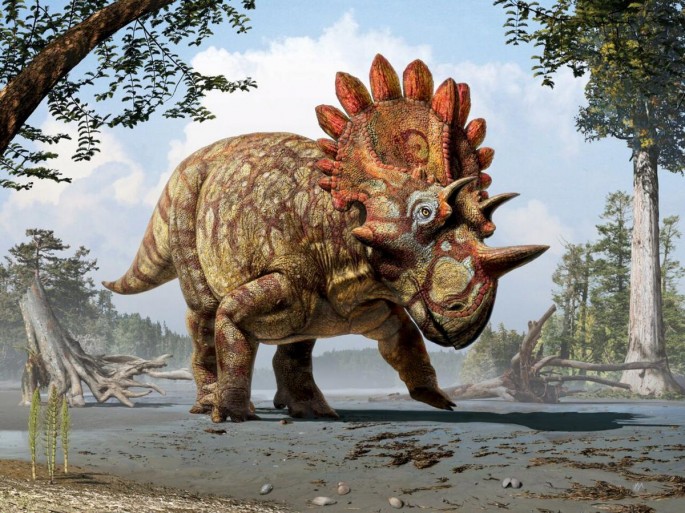A new dinosaur species that was recently unearthed has been named "Hellboy" because it resembles the good-natured demonic character featured in comic books. The new dinosaur discovered, a cousin of Triceratops, featured a large horn above its nose, a saw-toothed forehead, and spikes on the back of its skull.
The size of the newly discovered dinosaurs is nearly the same as modern-day rhinos. The dinos were about 16 ft. (4.9 m) long, 5 ft. (1.5 m) tall, and 1.5 tons (1,361 kg).
Caleb Brown from the Royal Tyrrell Museum of Paleontology in Alberta, Canada described the Hellboy dinosaur as one of the "weirdest" horned dinosaurs. This is crystal clear when compared with its close relatives.
Brown said that many dinosaur researchers who visited the museum "did a double take" when they first saw the new dino fossils in the laboratory. Its official name is Regaliceratops peterhewsi.
The first name means "Royal horned face." Meanwhile, the second name pays tribute to Peter Hews, the geologist responsible for the new dinosaur discovered.
Hews, an amateur dino hunter, discovered the fossils in 2005 when he spotted a group of dark stones on an Alberta riverbank. He has humbly stated, "I just found it."
Another reason the horned dinosaurs were named after the Hellboy superhero was due to the "devishly hard" work required to extract the skull from an ultra-hard bedrock, according to USA Today. Removing the 1,300-pound (590 kg) block required an electric jackhammer and helicopter.
Darren Tanke, who helped with the dino fossil excavation, coined the dinosaur's nickname. Hellboy dinosaurs lived about 70 million years ago during the Cretaceous Period, according to The Telegraph.
The plant-eating animal species was the cousin of Triceratops. It was so huge that even the vicious T. rex was no match for an adult Regaliceratops.
Paleontologists observed that the dino skull has been very well preserved. The new dinosaur discovered likely used its horns for mating display instead of self-defense.
Findings from the new scientific study were published in this week's edition of Current Biology. Its fine print includes Brown's marriage proposal to his colleague, Lorna.



























